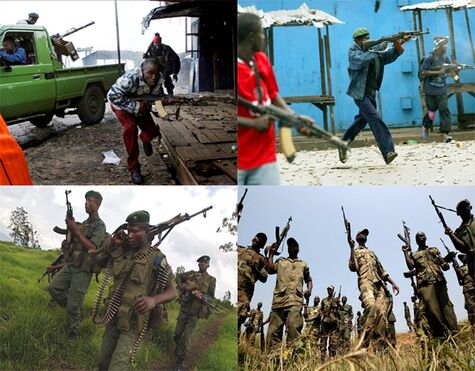Lyoan Civil War: Difference between revisions
(Created page with "{{Template:WIP}} {{Infobox military conflict | conflict = Lyoan Civil War | width = | partof = | image = Lyoan Civil War Collage.jpg | image_size = 475...") |
mNo edit summary |
||
| Line 32: | Line 32: | ||
* [[Lyoa National Defense Forces]] | * [[Lyoa National Defense Forces]] | ||
* [[Paleocacher|Paleocacherian]] mercenaries | * [[Paleocacher|Paleocacherian]] mercenaries | ||
[[File:Lyoa Flag.png|23px|border]] [[Tulossa Loyalist Insurgency|Tulossa loyalists]] (from | [[File:Lyoa Flag.png|23px|border]] [[Tulossa Loyalist Insurgency|Tulossa loyalists]] (from 2002) | ||
| combatant2 = [[Revolutionary United Forces]] | | combatant2 = [[Revolutionary United Forces]] | ||
* Paleocacherian mercenaries | * Paleocacherian mercenaries | ||
Revision as of 01:56, 15 October 2019
This article is incomplete because it is pending further input from participants, or it is a work-in-progress by one author. Please comment on this article's talk page to share your input, comments and questions. Note: To contribute to this article, you may need to seek help from the author(s) of this page. |
| Lyoan Civil War | |||||||||
|---|---|---|---|---|---|---|---|---|---|
 (clockwise from top left) Revolutionary United Forces rebels fighting during the Battle of Tigera.
| |||||||||
| |||||||||
| Belligerents | |||||||||
|
|
|
| ||||||
| Commanders and leaders | |||||||||
|
|
Marcil Yantanda Kemoh Foday |
Emmerson Mponda Joshua Pierre Hagando | Thomas Radinka | ||||||
| Strength | |||||||||
| ~90,000 (1998) | ~30,000 (1999) | ~28,000 (1999) | ~25,000 (1998) | ||||||
| Casualties and losses | |||||||||
|
Between 60,000-350,000 killed 1+ million displaced | |||||||||
The Lyoan Civil War (1998-2003) was a major civil war in Lyoa that began on 10 August 1998 when military defectors formed the Democratic Army of Lyoa to overthrow the government of Laurent Tulossa. The war lasted for over 4 years, and ended with the signing of the Orléans Peace Accords in August 2003. By the conflict's end, well over 60,000 had been left dead. Hostilities have continued since the Eastern and Northern conflicts.
The conflict saw the rise of three major rebel armies, who were all at odds with each other in addition to the government. The first of these rebel movements was the Democratic Army of Lyoa, which began the civil war. Shortly after, the Nationalist Front and Revolutionary United Forces arose and began challenging the government and Democratic Army. By 2000, the government only held 1/4 of the country, although control was limited outside of major cities.
In late 2002, the Revolutionary United Forces closed in on Tigera and managed to take the city, ending the government of Tulossa, who had already fled the country. Conflict between rebel groups continued until August 2003, when a peace accord was finalized in Orléans, Quebecshire. The agreement set up democratic elections, and integrated the rebel groups as political parties, and integrated their soldiers to the military.